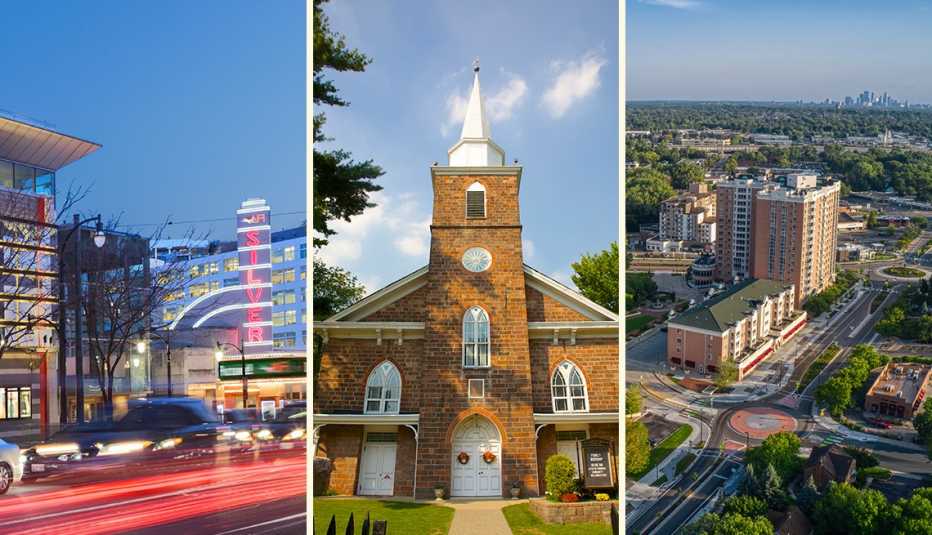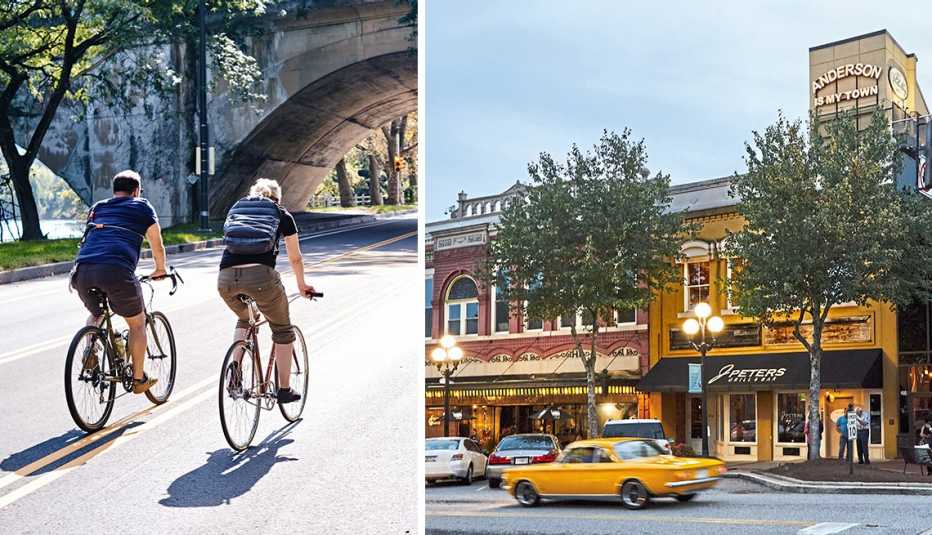Staying Fit
Try the AARP Livability Index Tool
Research your own community or one you’re interested in by using the AARP Livability Index. The index uses seven categories and 61 indicators to evaluate cities and towns. Users can enter an address, city, state or zip code to learn more about how communities fare when it comes to everything from transportation and the environment to medical care and civic engagement. Locations are scored on a 0-100 scale and users can customize searches and compare cities and towns.
Have you ever tried to research a new community that looks like a great place to live? Or maybe you serve on a local committee, and you want to find out how other towns approach challenges. You could spend hours or days on data sites gathering information. Or you could turn to the AARP Livability Index, newly updated for 2022.
The recently updated index weighs 61 different indicators across 200,000 communities in the United States to arrive at a single livability score for each locale. This single data point can be further fleshed out through the index’s various features.


AARP Membership— $12 for your first year when you sign up for Automatic Renewal
Get instant access to members-only products and hundreds of discounts, a free second membership, and a subscription to AARP the Magazine.
Originally developed in 2015, the AARP Livability Index considers criteria important to adults 50-plus — and the community at large — like housing costs, walkability, robust public transportation, and access to medical care and broadband, among many other factors, to determine how easy it is to live in those locations.
“A livable community is a place for people of all ages. It’s a place that has the housing and transportation options and community features that people need so they can safely thrive there regardless of age, income or physical abilities,” says Rodney Harrell, AARP’s vice president of family, home and community and one of the experts who created the original index. “People should have communities that help enable them.”
Top-scoring communities
The new index looks at locations through “seven dimensions of livability,” says Shannon Guzman, strategic policy advisor at AARP’s Public Policy Institute. Those categories are housing, neighborhood, transportation, environment, opportunity, health and engagement.
To create its top 10 lists, AARP factored in community size, breaking out communities by population: large cities 500,000-plus, midsize cities 100,000-499,999, small cities 25,000-99,999 and, new this year, small towns 5,000-24,999.
Top 10 Large Cities 500,000+


1. San Francisco
2. New York
3. Washington, D.C.
4. Boston
5. Portland, Ore.
6. Philadelphia
7. Denver
8. Seattle
9. San Jose, Calif.
10. Milwaukee
In general, AARP’s top-scoring livable communities not only get high marks in the seven categories of livability but are also locations with policies that consider inclusive design for housing, hazard mitigation plans, support for accessory dwelling units, state foreclosure prevention and protection, and plans to create age-friendly communities, says Jana Lynott, the AARP Public Policy Institute’s senior policy advisor and project director for the index.
But that doesn’t mean communities that don’t make the top lists aren’t great places to live, Harrell says.
“Look at the top 10s as a highlight, but don’t make too many generalizations, as there are thousands of communities in the country, including many relatively high-scoring ones, that don’t make it to the top 10 lists,” he explains. “Generally speaking, the index is full of surprises when you look at all of the factors. Places that have a desirable reputation may not have all of the options that the index considers.”
Index creators acknowledge that across the board, housing costs are a challenge and that some places on the top 10 lists are expensive to reside in. “Housing affordability is a huge crisis in the U.S., and the communities that have the amenities and characteristics that appeal to people are also those where housing costs are high,” Lynott says.






































































